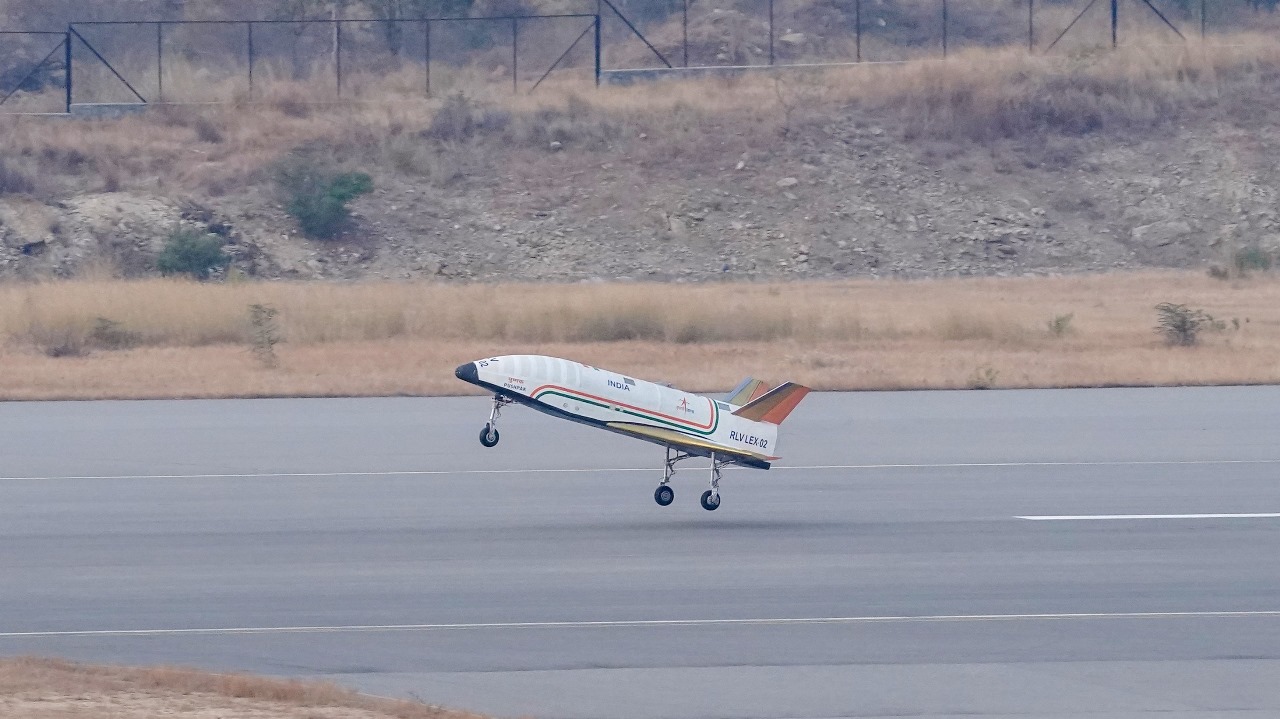Chitradurga, Karnataka, June 23, 2024: The Indian Space Research Organisation (ISRO) announced a significant achievement on Sunday with the successful completion of the final test of the Reusable Launch Vehicle (RLV) Landing Experiment (LEX). This marks the third consecutive success in the LEX technology series, demonstrating the RLV’s autonomous landing capability under increasingly challenging conditions.
The LEX-03 mission, conducted at 07:10 a.m. at the Aeronautical Test Range (ATR) in Chitradurga, Karnataka, faced more demanding release and wind conditions than its predecessors. According to ISRO, the mission achieved success with a cross range of 500 meters, compared to 150 meters for LEX-02.
During the experiment, the winged vehicle, named ‘Pushpak’, was released from an Indian Air Force Chinook Helicopter at an altitude of 4.5 kilometers. Equipped with advanced autonomous capabilities, Pushpak executed precise horizontal landing maneuvers under challenging conditions.
“Pushpak autonomously executed cross-range correction maneuvers, approached the runway, and performed a precise horizontal landing at the runway centerline,” ISRO stated. The vehicle’s low lift-to-drag ratio aerodynamic configuration resulted in a landing velocity exceeding 320 km/h, compared to 260 km/h for commercial aircraft and 280 km/h for typical fighter aircraft.
Post-touchdown, brake parachutes reduced Pushpak’s velocity to nearly 100 km/h, and the landing gear brakes were used to decelerate and stop the vehicle on the runway. The RLV-LEX mission utilized multisensor fusion technology, including an inertial sensor, radar altimeter, flush air data system, pseudo lite system, and NavIC, to simulate the approach and landing interface and high-speed landing conditions for a vehicle returning from space.
ISRO highlighted that the winged body and flight systems were reused from the LEX-02 mission without any modifications, demonstrating the robustness and reusability of ISRO’s flight system designs. This success also validates the advanced guidance algorithms necessary for future orbital reentry missions.
Following this milestone, ISRO aims to advance to the RLV-ORV, the orbital reusable vehicle, signaling a significant step forward in reusable space technology.
This achievement underscores ISRO’s commitment to pioneering advancements in space technology and reaffirms its capability to design and execute complex missions with precision and innovation.


